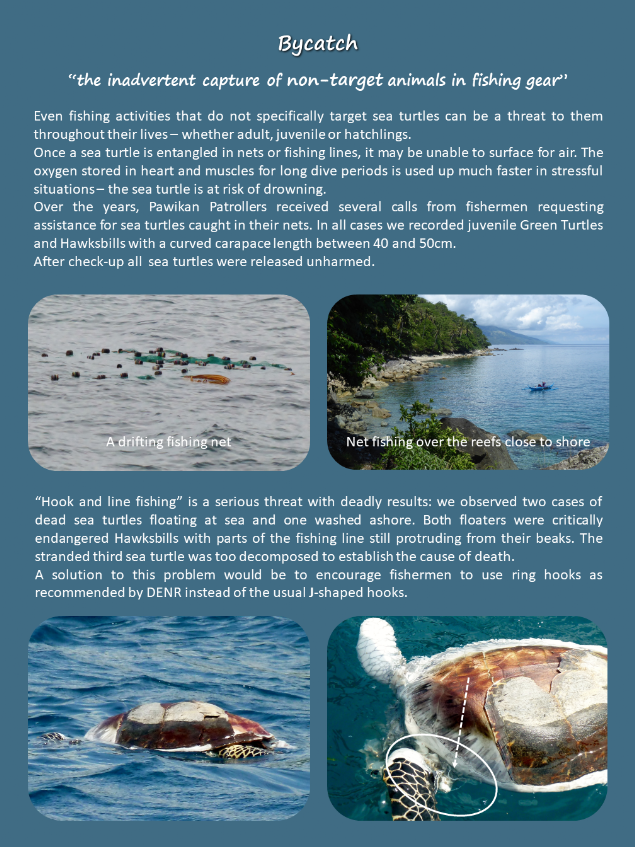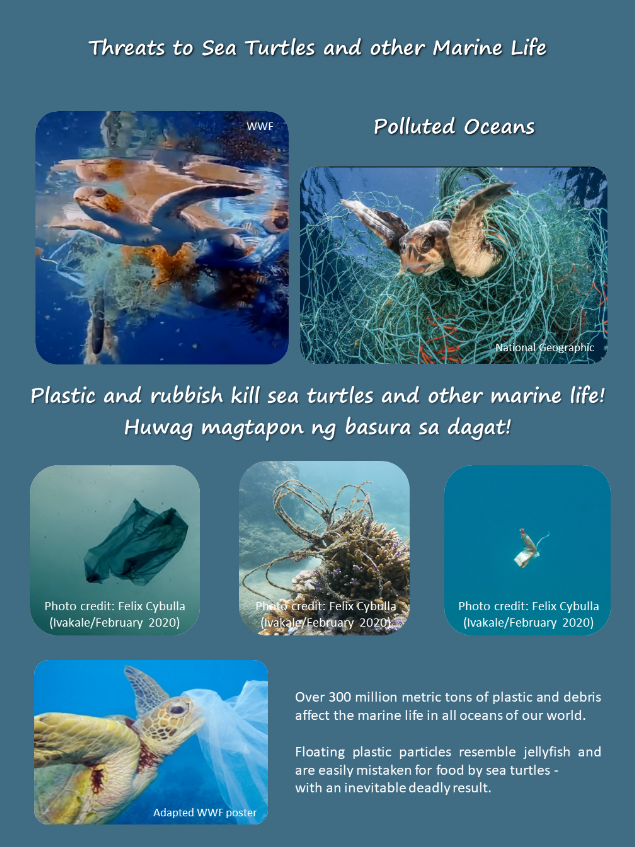On Land and at Sea - it's a dangerous Life
Threats to Sea Turtles
The world-wide distribution of almost all sea turtle species as well as their migratory patterns overlap the juridical boundries of many countries. International agreements (CITES, CMS, CBD) are in place, ratified by most countries including the Philippines. Nevertheless, the poaching of eggs and killing of sea turtles for their meat and shells is still ongoing in many parts of the world. There are additional factors that are the cause of dwindling sea turtle populations.
A sea turtle's most dangerous predator is "homo sapiens" - through actions that continue to have both a direct and indirect impact on sea turtles' lives. In general, these actions include:
- Poaching - illegal collection of sea turtle eggs
- Hunting - intentional killing of sea turtles for their shells and meat
- Environmental pollution - loss of healthy foraging and nesting habitats
- Coastal development - loss of nesting beaches
- Bycatch - inadvertent capture in fishing gear
- Climate change - the nest temperature determines the sex of sea turtles. Increasingly warmer temperatures would produce only female hatchlings and no males. The melting of ice caps will lead to a rise of the sea level, possibly flooding nesting habitats. An increased sea temperature may change the oceans' currents, possibly shifting the sea turtles' migratory routes.
Not all of above is applicable to this area, e.g. intentional killing of sea turtles is unheard of; there are no bright beach lights to disturb nesting females or to disorientate hatchlings. It is encouraging to know that protective measures for a more secure nesting beach and foraging grounds have been incorporated in the Municipal's "Integrated Coastal Management" (ICM) project.
The following paragraphs investigate more closely the problems that Pawikan Patrollers observed and encountered in Brgy. Udalo.





